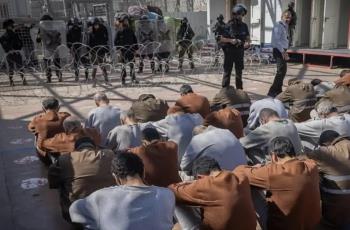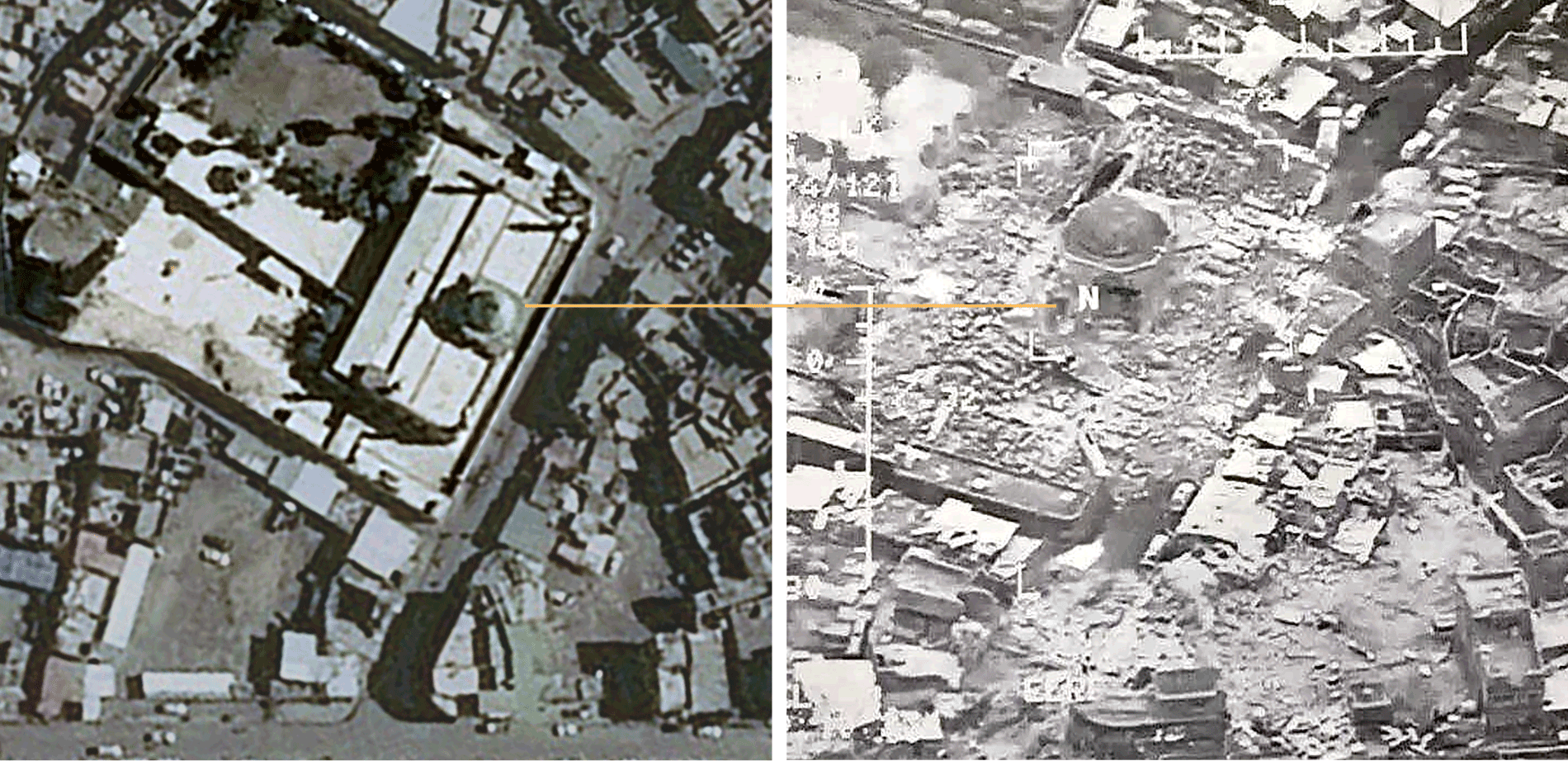Alwaght- Cornered ISIS Takfiri terrorists have blown up Mosul’s historic Grand al-Nuri Mosque, where the terrorist group’s ringleader Abu Bakr Al-Baghdadi announced the formation of a so-called caliphate after capturing the northern city in 2014.
The blasts occurred as Iraq's elite Counter Terrorism Service units had reached within 50 meters of the terrorists.
"Our forces were advancing toward their targets deep in the Old City and when they got to within 50 meters (yards) of the Nuri mosque, ISIS committed another historical crime by blowing up the Nuri mosque and the Hadba" minaret, said Nineveh Liberation Operation Commander Lieutenant General Abdul Amir Yarallah in a statement released on Wednesday night.
The destruction of the mosque and minaret — which has dominated Mosul’s skyline for centuries and is pictured on Iraq’s 10,000 dinar bank note — is another blow to the city’s rich cultural heritage and its plethora of ancient sites that have been damaged or destroyed during three years of brutal ISIS occupation.
Earlier in the day, Iraqi military officials announced troops has had encircled the mosque -- ISIS’s last stronghold in the Old City of Mosul.
Declaration of Defeat
After the army announced that ISIS had destroyed the mosque, Iraqi Prime Minister Haider al-Abadi said, "It's an official declaration of defeat."
Meanwhile, the Takfiri terrorists claimed that the mosque was destroyed by a US airstrike, but the so-called US-led coalition rejected the claim. "We did not strike in that area," said US–led coalition spokesman Colonel John Dorrian. "The responsibility of this devastation is laid firmly at the doorstep of ISIS," he added.
Iraqi officials had privately expressed the hope that the mosque could be captured in time for Eid al-Fitr, the festival marking the end of Ramadan, the Muslim fasting month. The first day of the Eid falls this year on June 25 or 26 in Iraq.
The Mosque’s apparent destruction occurred during the holiest period of the Islamic holy month of Ramadan, its final ten days. The night of Laylat ul-Qadr falls during this period, marking when Muslims believe the Quran was revealed to the prophet.
End of al-Baghdadi's so-called caliphate
The fall of Mosul would, in effect, mark the end of the Iraqi half of the “caliphate” even though Islamic State would continue to control territory west and south of the city, the largest they had control of in both Iraq and Syria.
The mosque is named after Nuruddin al Zanki, a noble who fought the early crusades from a fiefdom that covered territory in modern-day Turkey, Syria and Iraq. The mosque was built in 1172-73, shortly before his death, and housed an Islamic school.
By the time renowned medieval traveler Ibn Battuta visited two centuries later, the minaret was already leaning. Its tilt gave the landmark its popular name – al-Hadba, or the hunchback.
It was built with seven bands of decorative brickwork in complex geometric patterns ascending in levels towards the top in designs also found in Persia and Central Asia.
Iraqi government troops regained control over eastern Mosul in January after three months of intensive military operation. Iraqi forces began late April to advance towards the enclave from the northwest.
The operations to liberate Mosul are being carried out by the Iraqi army and Iraqi pro-government fighters from Popular Mobilization Forces.



























